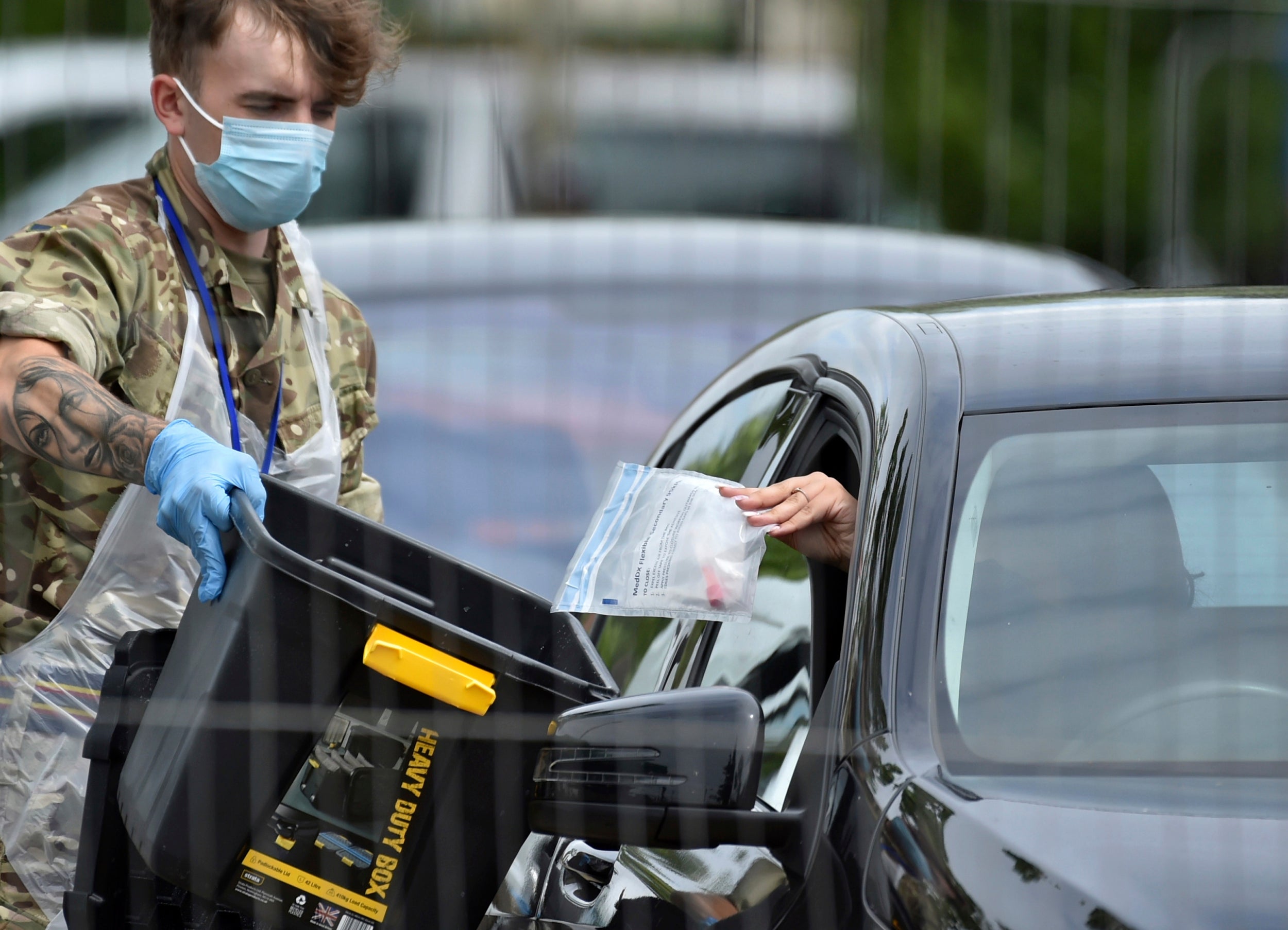Coronavirus: Second consecutive day over 1,000 new cases in UK for first time since June
In 24-hour period up to 9am, a further 1,009 cases of Covid-19 were recorded

Your support helps us to tell the story
From reproductive rights to climate change to Big Tech, The Independent is on the ground when the story is developing. Whether it's investigating the financials of Elon Musk's pro-Trump PAC or producing our latest documentary, 'The A Word', which shines a light on the American women fighting for reproductive rights, we know how important it is to parse out the facts from the messaging.
At such a critical moment in US history, we need reporters on the ground. Your donation allows us to keep sending journalists to speak to both sides of the story.
The Independent is trusted by Americans across the entire political spectrum. And unlike many other quality news outlets, we choose not to lock Americans out of our reporting and analysis with paywalls. We believe quality journalism should be available to everyone, paid for by those who can afford it.
Your support makes all the difference.The UK has recorded a second consecutive day of over 1,000 new positive cases of coronavirus for the first time since late June.
In an update on Wednesday, the government official data said 46,706 people had died in hospitals, care homes and the wider community after contracting Covid-19 – up by 77 on the previous day.
The Department of Health and Social Care (DHSC) added that in the 24-hour period up to 9am, there had been a further 1,009 lab-confirmed cases. Overall, a total of 313,798 cases have been confirmed.
It marks the first instance of two consecutive days of cases exceeding 1,000 in the UK since the 26 June when the number of daily cases began falling into the three digits.
It will undoubtedly raise concerns of a spike of the disease in the UK, as countries in Europe, including France and Spain, experience up-ticks in the number of people being infected with Covid-19 on a daily basis.
However, officials will point to increased testing in hotspot areas of the country and the increasing number of individuals being tested for coronavirus. DHSC also insists the UK “continues to have low levels of the disease compared to the start of the pandemic”.
It comes after 1,148 new cases of the virus were recorded on Tuesday – the highest rise since mid-June – breaching an official government threshold. Ministers had originally failed to publish the data yesterday due to “technical difficulties”.
In May, the Joint Biosecurity Centre (JBC) said keeping the caseload below 1,000 confirmed infections per day was a key target it believed must be met if “flare-ups” of the virus are to be avoided.
Christina Pagel, of the Independent Sage group of scientists, which shadows the government’s Scientific Advisory Group for Emergencies (Sage), said Boris Johnson must set out if he would be changing strategy, as infections rise again.
“The JBC set 1,000 cases a day as a warning threshold – but we don't know what action is meant to be taken on the back of it, or why they picked 1,000,” said the research professor at University College London.
“We don’t know whether the government is actually planning on changing strategy in light of ticking up numbers. Or even, what government strategy is in general.
“Mr Johnson has said opening schools a priority but he hasn't given any detail of what that means in terms of policy, nor any indication that they are trying to drive down cases before schools open in England.”
Join our commenting forum
Join thought-provoking conversations, follow other Independent readers and see their replies
Comments